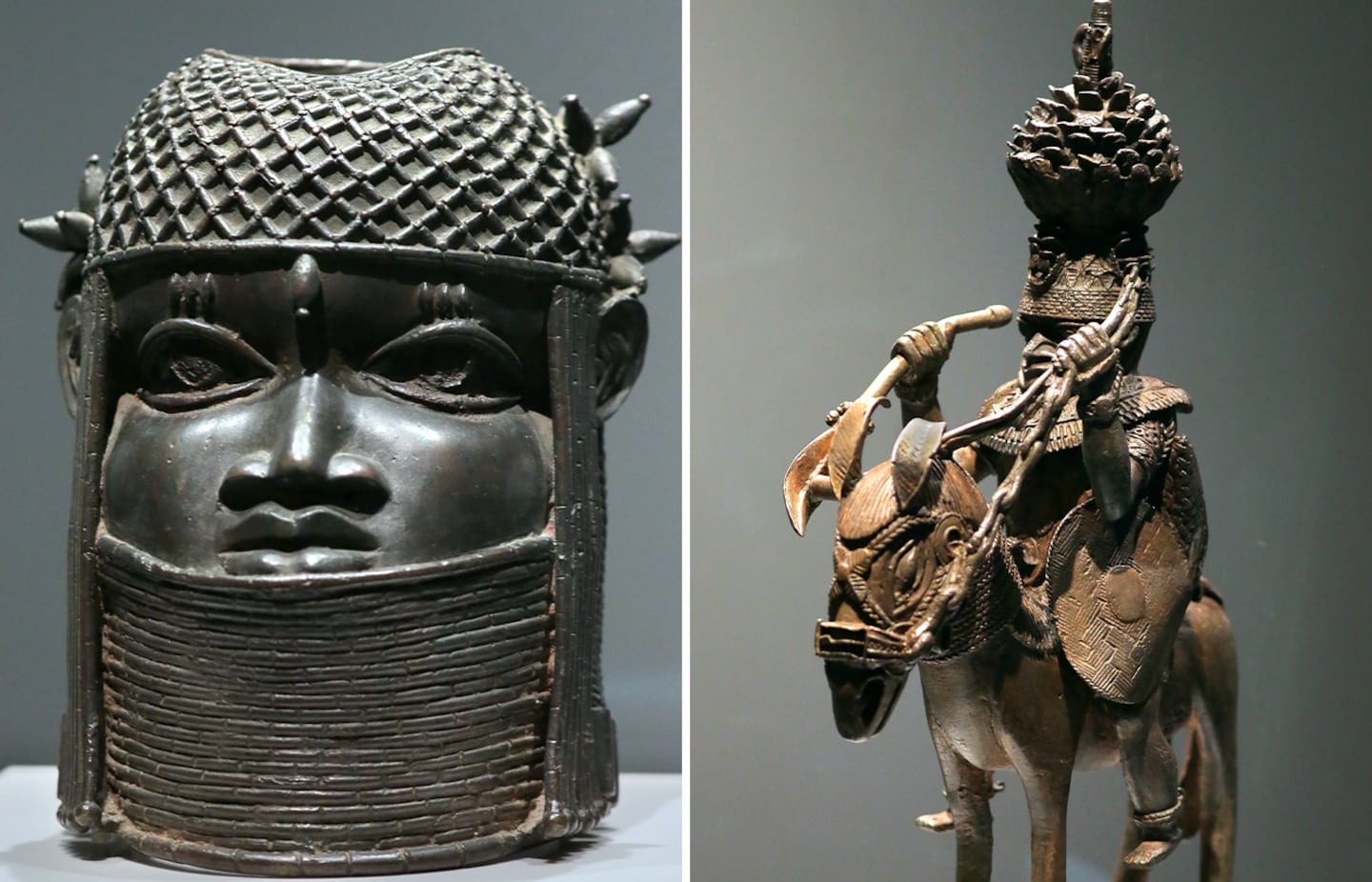Despite his familiar surname, Robert Owen Lehman Jr. never figured prominently in the family business.—
“Robin,” as he’s known, was not a bigwig at Lehman Brothers, the global financial services firm founded nearly two centuries ago by his great grandfather. Instead, his focus has been art – collecting it and making it.
Perhaps because he didn’t run with the bulls on Wall Street, Lehman, who’s 88, has managed to keep a low profile – at least compared to his celebrated father and grandfather, whose combined art collection, featuring paintings by Rembrandt, Goya, El Greco, Degas, Cezanne, and early Picasso, was so miraculous it hung for a time in the Louvre. (“A Louvre show is the equivalent of knighthood for collectors,” Time magazine wrote in a piece about the financiers’ 1957 Paris exhibit.)
Now, though, Lehman is attracting attention for some of the art he’s collected. Specifically, several sculptures – known as the Benin Bronzes – are the subject of complicated ownership discussions involving Lehman, the Museum of Fine Arts, and interested Nigerian parties.
Lehman pledged the items to the MFA a decade ago, and they have been displayed ever since in a dedicated gallery just off the museum’s central rotunda. But the provenance of the work has always been a problem: it’s well known that many of the sculptures were plundered during a raid of the West African Kingdom of Benin by British troops in 1897.
Last week, as the MFA was seeking to resolve the ownership of the Benin Bronzes, Lehman informed the museum that he wanted them back. Matthew Teitelbaum, the MFA’s director and chief executive, said Lehman’s decision to rescind the pledge came after a years-long conversation of possible solutions.
Attempts to contact Lehman have not been successful. He lives in upstate New York with his second wife, Marie Rolf, a retired professor of music theory at the University of Rochester’s Eastman School of Music. The couple, who serve together on the board of trustees of the Robert Lehman Foundation, have two grown children. (Lehman’s two children from his first marriage to Aki Eveline Yanai – Kate Lehman and Phillip Lehman, known as “Bando” – are both accomplished artists.)
Persistent questions about the provenance of another work of art in Lehman’s possession were settled last year in a Rochester courtroom when a judge ruled that “Portrait of the Artist’s Wife,” a painting by the Austrian artist Egon Schiele, should be turned over to the heirs of two men who knew Schiele and were killed by the Nazis during the Holocaust. Lehman said he received the painting from his father in the 1960s.
In addition to accumulating art, Lehman has also made some. In 1974, he won an Academy Award for directing “Don’t,” a documentary short about the life cycle of a monarch butterfly. (He was presented with the Oscar by Danny Thomas and actress Lauren Hutton.) Lehman also won an Academy Award the next year for his direction of “The End of the Game,” a documentary short about the need for conservation in Africa.
“They have told me that the talent of a producer lies in the talent the producer selects to work with, and I think I showed the producer’s talent when I picked Robin Lehman to work with,” the film’s producer Claire Wilbur said after she and Lehman were presented the Oscar by actor Beau Bridges.
More recently, Lehman has been creating glass art. According to the website Robin Lehman Glass, he was “seduced by the wonderful glow and unique properties of hot glass” after a visit to the Studio at the Corning Museum of Glass, where he videotaped children working with the Venetian classical glass master William Gudenrath. Eventually, Lehman began creating works of his own, including a series of glass paperweights with the likenesses of famous composers.
Lehman Brothers, which was co-founded in 1850 by Lehman’s great grandfather, Emanuel Lehman, eventually grew to become the fourth-largest investment bank in the US. But it filed for bankruptcy in 2008, sparking economic panic worldwide. Its crash is considered one of the most spectacular corporate failures in history.
Mark Shanahan can be reached at mark.shanahan@globe.com. Follow him @MarkAShanahan.







